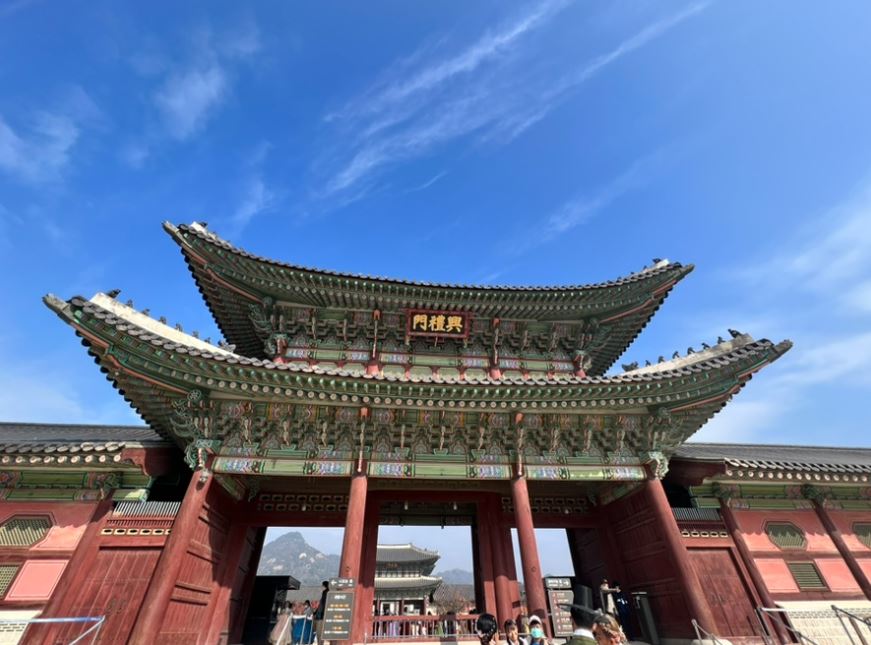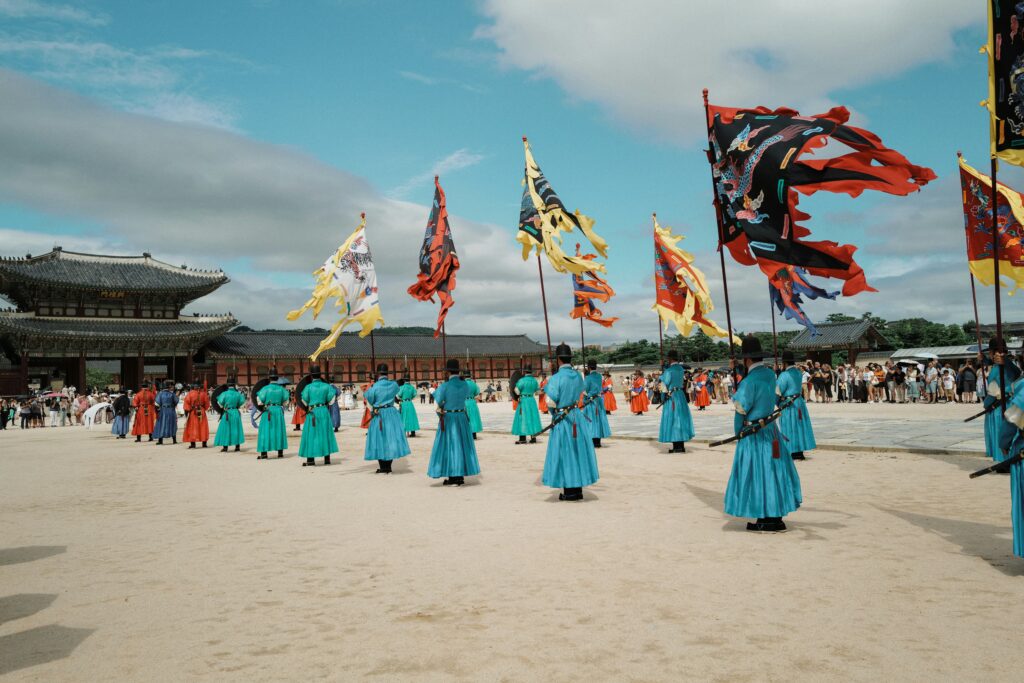Gyeongbokgung Palace, often referred to as the heart of Seoul, is one of the most significant cultural and historical landmarks in South Korea. Its rich history and stunning architecture attract millions of visitors every year. If you’re planning to visit, here are 10 fascinating facts about Gyeongbokgung Palace to enrich your experience

1. The Name Means “Palace Greatly Blessed by Heaven”
The name Gyeongbokgung (경복궁) literally translates to “Palace Greatly Blessed by Heaven,” symbolizing its importance and the hope for the kingdom’s prosperity.
2. Built in 1395
The palace was constructed in 1395, just three years after the founding of the Joseon Dynasty by King Taejo. It served as the primary royal residence for over 200 years.
3. The Largest of the “Five Grand Palaces”
Gyeongbokgung is the largest of Seoul’s Five Grand Palaces, which also include Changdeokgung, Changgyeonggung, Deoksugung, and Gyeonghuigung.
4. Destroyed and Rebuilt Multiple Times
Throughout history, Gyeongbokgung was destroyed multiple times, including during the Japanese invasions of the late 16th century and during the Japanese occupation in the early 20th century. Restoration efforts began in the 1990s, bringing it back to its former glory.

5. The Changing of the Guard Ceremony
One of the most popular attractions is the Changing of the Guard Ceremony, which takes place daily in front of Gwanghwamun Gate. This colorful reenactment provides a glimpse into ancient royal customs.
6. The Iconic Gwanghwamun Gate
Gwanghwamun Gate, the palace’s main gate, is one of the most iconic landmarks in Seoul. Though it was destroyed during the Japanese occupation, it has since been fully restored to its original grandeur.
7. Geunjeongjeon Hall – The Throne Room
The most important building within the palace grounds is the Geunjeongjeon Hall, where kings held official ceremonies and meetings. It’s a stunning example of traditional Korean architecture.
8. Beautiful Gardens and Ponds
Within the palace, you’ll find tranquil gardens and scenic ponds, such as Hyangwonjeong Pavilion, set on a picturesque island in the middle of a lotus pond, offering a peaceful retreat from the city.
9. National Museum of Korea and National Folk Museum
The palace grounds also house the National Palace Museum of Korea and the National Folk Museum, both of which showcase Korea’s cultural and royal history.
10. A Popular Filming Location
Gyeongbokgung Palace has been featured in countless Korean dramas and films, including historical series like “Jewel in the Palace” (Dae Jang Geum). It’s a favorite spot for locals and tourists alike who enjoy period dramas.